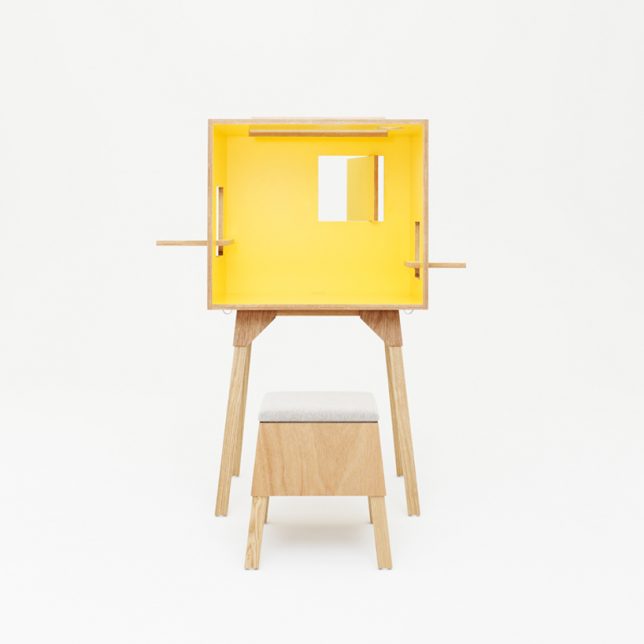HDR is a term increasingly causing confusion amongst both photographers and the masses. ‘Isn’t it that thing that makes my images look flat and less contrasty by including all the shadows and highlights in my final image?’ many of our friends and forum members ask.
Well, yes, if it’s not done right. But when it comes to displays, the ironic thing is that ‘HDR’ is meant to make imagery look less flat, by taking the wide dynamic range encompassed in HDR images and stretching it back out on the display to no longer look flat but, instead, encompass nearly as much punch as the scene had in the real world.
 |
Whenever a new display technology comes along, and particularly when it falls into that gap before it’s well defined or understood, monitor manufacturers LOVE to throw the spec all over their products. That, in a nutshell, is what has happened with the ‘HDR’ moniker and computer displays, making it very difficult for someone to know what is and isn’t a “real” HDR monitor.
What kind of brightness and contrast ratio should you be looking for? What’s the actual static contrast ratio, not the stupidly high (and irrelevant) dynamic contrast ratio often quoted? What kind of color output should you expect out of an HDR monitor? And what the heck is local dimming?
These are the questions that manufacturers tend to not answer, at least for now, and it’s why VESA has created the world’s first open standard for HDR displays: DisplayHDR.
Targeted largely at LCD-based computer monitors (not OLED), the purpose of DisplayHDR is to establish an open standard with fully transparent testing methodology, so you can “rate” your display and see where it falls on the HDR scales. Is it really just an SDR monitor, or does it rank as DisplayHDR-400 (low-tier), DisplayHDR-600 (mid-tier), or DisplayHDR-1000 (top-tier)?
Here’s how those tiers break down, and the performance metrics they have to hit:
 |
|
A breakdown of the VESA standard. Click to enlarge ‘Corner Maximum Limit’ is aimed to ensure local dimming implementations can effectively keep black levels low even when small non-central portions are illuminated brightly. ‘Tunnel Maximum Limit’ ensures good overall contrast with varied content all over the screen but with nothing hitting pure white. Many of these targets cannot be met without some sort of local dimming capability, which most computer displays don’t have. Consider these targets a ‘push’ to get manufacturers to embrace the future of HDR display. |
Up until now, there was no open standard for HDR displays. The closest thing we had is the UHD Alliance Premium Standard, which is essentially just a stamp that you’ll see on TVs, Blu-ray players, discs, and the like that ensures your device hits 4K resolution, BT.2020 color space, 10-bit encoding, and a few key contrast and brightness specs. But unlike the VESA standard, there’s no gradation: you either have the UHD Alliance Premium Standard badge or you don’t.
VESA’s standard, on the other hand, aims to grade LCD-based computer monitor displays or grading monitors. It establishes tiers that manufacturers can shoot for when designing computer monitors. And since most if not all of these manufacturers are members of VESA, they have access to the documentation outlining the specifications and testing methodologies.
The hope is that the standard becomes widely accepted. That way, you can look for the VESA badge on your next monitor purchase to make sure the manufacturer isn’t just throwing the term “HDR” onto an IPS monitor that can only hit 350 nits brightness and a 1000:1 static contrast ratio (many otherwise highly-rated IPS monitors aimed at photographers from manufacturers like Dell, BenQ, Eizo and the like).
A DisplayHDR-400 rated display would be guaranteed to hit peak brightness of 400 nits, a black level of no more than 0.4 nits for a largely black scene (or 0.1 nits for a more varied scene only hitting 50% white at any point), 10-bit encoding, and 95% sRGB coverage. This would be considered the “first genuine entry point for HDR” by VESA. Funny enough, the otherwise excellent IPS displays many photographers choose might hit this standard, but we’d argue you shouldn’t consider such a display ‘HDR’. In other words, we here at DPReview don’t really consider monitors with the ‘DisplayHDR 400’ truly ‘HDR’. Grading or processing your images on these displays aren’t going to guarantee your images will look proper on future, truly ‘HDR’ displays.
A DisplayHDR-600 rated display would be guaranteed to hit a peak brightness of 600 nits, a black level of no more than 0.1nits, 10-bit encoding, 99% sRGB, and at least 90% DCI-P3 coverage. These specs, according to VESA, describe “professional/enthusiast-level laptops and high-performance monitors.” This rating, in our opinion, is far more stringent and is better indicative or a truly ‘HDR’ display. If you want your images and video to be future-proof, pick a display rated no lower than this.
Finally, a DisplayHDR-1000 rated display would guarantee peak brightness of 1000 nits, a black level of no more than 0.05 nits, 10-bit encoding, 99% sRGB, and at least 90% DCI-P3 coverage. This final tier describes, “professional/enthusiast/content-creator PC monitors.” This is the stamp of approval we’d be looking at were we to be grading video or photos that will look good on displays of the future. Monitors with the DisplayHDR-1000 badge will be far more representative of the displays of the future, so if you want to make sure your content is ready to be displayed on future devices, this is the badge you’ll want to look for when shopping for monitors.
 |
| This new 5K UltraWide monitor from LG earned the VESA DisplayHDR-600 badge, meaning it hits at least 600 nits peak brightness, 10-bit encoding, and 99% sRGB and 90% DCI-P3 coverage. |
These new standards are also more stringent about color gamut coverage: the 600 and 1000 standards require what we’d call ‘wide gamut’ color coverage, capable of displaying colors well outside of the old (can we say ‘boring’) sRGB standard of yesteryear. That means they can display colors well outside of old photochemical printing devices, so you can edit far more saturated and interesting colors into your image that will be displayed by monitors and printers of the future (and current).
Furthermore, these new standards set stringent requirements on bit-depth: while 8-bit monitors with dithering are allowed, each one of these standards require you hit 10-bit color reproduction with or without 2-bit temporal dithering (many monitors of the past would only hit 8-bit by 6-bit panels with 2-bit dithering: a big no-no for HDR content capable of displaying a wider range of luminances and colors that might otherwise band or posterize with 6-bit panels).
To learn more about the new VESA standards, head over to the DisplayHDR website. There, you’ll find a simple breakdown of what constitutes an HDR display, why the standard was set up, and a link to download the DisplayHDR CTS (Compliance Test Specification) for free.
Articles: Digital Photography Review (dpreview.com)



























You must be logged in to post a comment.